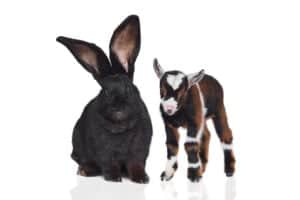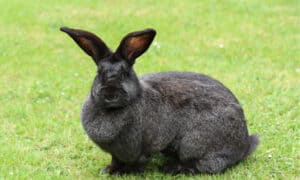Most of us see tiny rabbits hopping around our backyards or local parks. Rabbits are small animals, and seeing large ones is relatively rare. But what are the largest rabbits hopping around the United States, and where can we find them?

The two largest wild rabbits in the United States are the Antelope Jackrabbit and the Black-Tailed Jackrabbit. Some of the largest pet rabbits in the states are the Continental Giant, Flemish Giant, and Blanc de Bouscat.
In this article, we’ll talk about the five largest rabbits in the U.S., their sizes, where to find them, and more!
1. Antelope Jackrabbit

Antelope Jackrabbits are named for their white undersides, which are similar to antelopes.
©Vincent Pro Photo/Shutterstock.com
Antelope Jackrabbits have long ears and legs. They’re tan-brown with white undersides. These buns are typically found along the Pacific border of Mexico and the southern United States. They also live in Arizona, primarily in the Sonoran Desert.
Most active during dawn and dusk, you might also see an Antelope Jackrabbit out and about on cloudy days or at night. They’re solitary animals that eat plant matter, such as grass and cacti. They especially enjoy succulent plants because they don’t drink water but instead get it from their food.
Antelope Jackrabbits weigh nine to ten pounds. They’re quick runners and can hit top speeds of 40 miles per hour.
2. Black-Tailed Jackrabbit
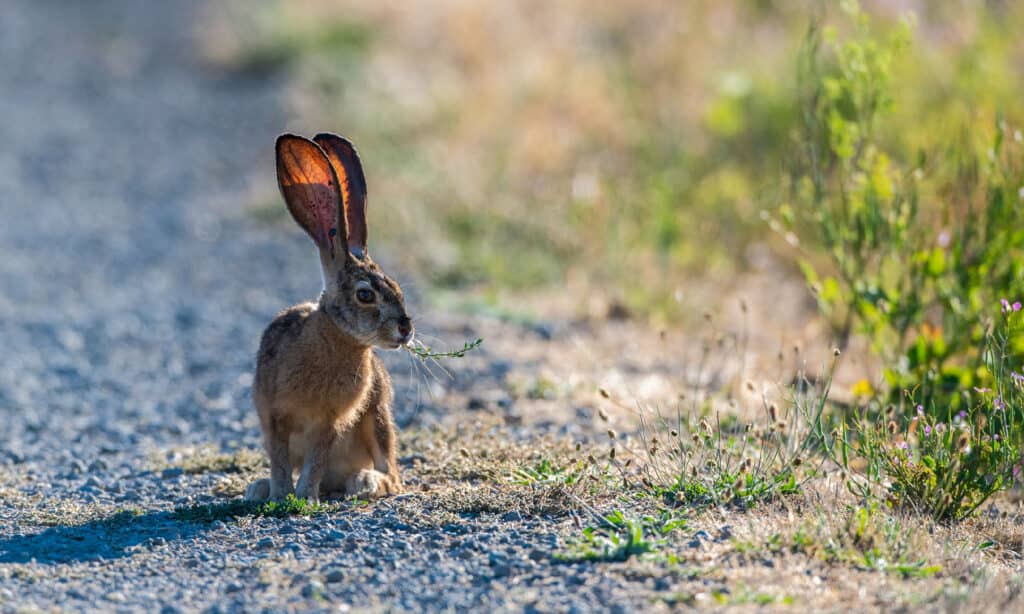
Black-tailed Jackrabbits are brown with black stripes on their tails.
©iStock.com/zhuclear
Black-Tailed Jackrabbits weigh three to six pounds and measure up to two feet long, making them the second largest wild rabbit in the U.S. They have large ears that help them listen for predators and brown fur that helps them blend into their environment.
Their habitat includes the western United States and Mexico. They’ve also been introduced into the wild in Kentucky and New Jersey. They’re most active at nighttime. Like Antelope Jackrabbits, they’re solitary animals.
Black-Tailed Jackrabbits are herbivores who eat mostly grass and succulent plants such as cacti.
3. Continental Giant
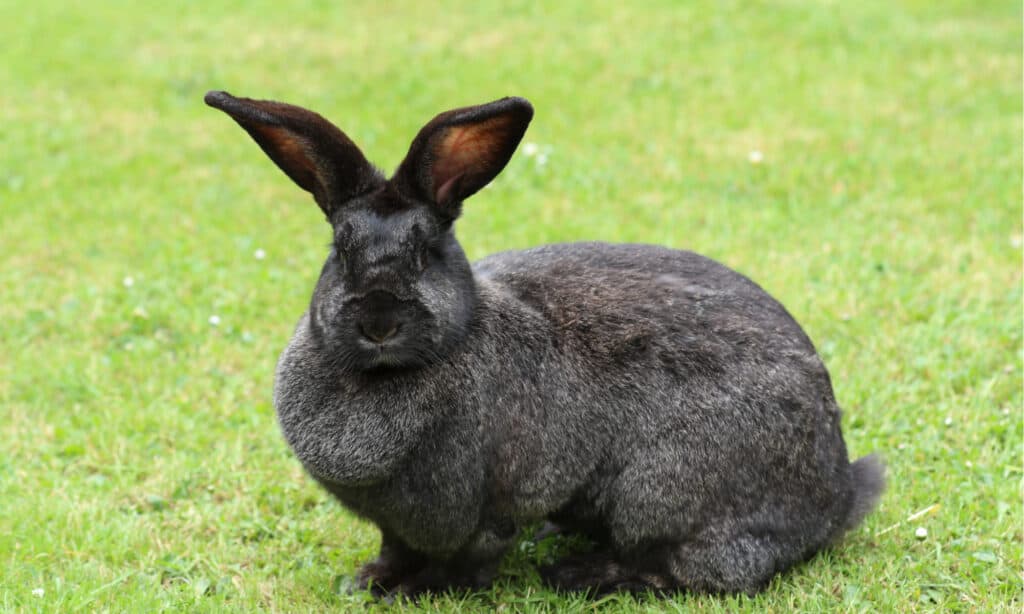
Continental Giants are domesticated rabbits found all over the United States.
©Stephen Clarke/Shutterstock.com
Continental Giants, also known as German Giants, were initially bred for meat–which is the unfortunate case for most giant rabbit breeds. They’re domestic animals and are now commonly kept as pets.
An important thing to know about pet rabbits is that they aren’t cage animals. Even small rabbits should be allowed to free-roam a room or your entire home, and this is even more vital for large breeds like the Continental Giant.
Pet rabbits like the Continental Giant and others on our list also aren’t solitary like jackrabbits. Instead, they need a rabbit friend in order to live their best lives. Keeping just one pet rabbit isn’t okay unless there are medical reasons to do so.
Continental Giants weigh a whopping 16-20 pounds and are one of the largest domesticated rabbits in the United States. They are not found in the wild.
Hay is the staple of their diet, and they need 24/7 access to it. They also need a variety of daily vegetables to stay healthy.
4. Flemish Giant

Another domestic breed, Flemish Giants, weigh an average of 15 pounds.
©Veroja/Shutterstock.com
Flemish Giants are actually the ancestors of Continental Giants. They weigh around 15 pounds on average, with some being bigger and others smaller.
Originally bred for their soft, thick fur, Flemish Giants are now often kept as pets. They’re the largest pet rabbit in the U.S. Their fur comes in several colors, including black, blue, fawn, light gray, sandy, steel gray, and white.
They need plenty of space to roam, just like a cat or dog. But unlike cats and dogs, rabbits are prey animals. When keeping them as pets, it’s important to keep their environment low-stress and to learn how to interact without scaring them!
Like other rabbits, these buns are herbivores. Hay makes up 80% of their diet, while the rest should consist of vegetables and a small amount of plain rabbit pellets.
5. Blanc de Bouscat
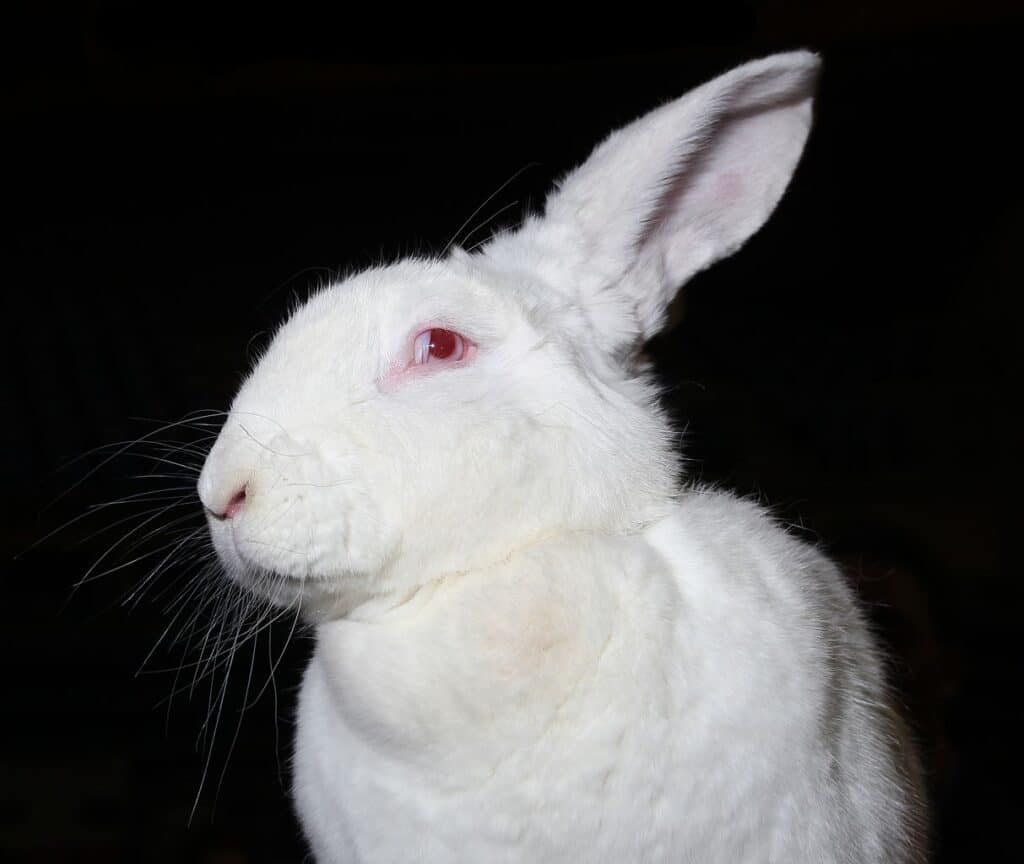
Blanc de Bouscat rabbits have red eyes and white fur. They weigh over 13 pounds.
©Lionel Allorge / GNU Free Documentation License – License
These rabbits weigh over 13 pounds. They have thick, silky white coats that require regular brushing. These buns have red eyes, which can make it difficult for rescues and shelters to find homes for them.
Despite an appearance some people dislike or find scary, Blanc de Bouscat and other red-eyed rabbits are just as sweet and lovable as any other.
They’re known for being calm and gentle; some people say they make good family pets. While giant rabbits are less frail than tiny ones, I still recommend extreme caution around children–as rabbits have fragile spines that can break easily.
Like the other domestic rabbits on our list, they require a large space to free roam and eat primarily hay and vegetables.
That concludes our list of the five largest rabbits in the U.S. I hope you’ve enjoyed seeing these beautiful animals and learning a bit more about them! To learn more, check out the 10 largest rabbits in the world.
Summary of the 5 Largest Rabbits Hopping Around The United States
| Rank | Rabbit | Native Location |
|---|---|---|
| 1 | Antelope Jackrabbit | Border of U.S. and Mexico, Arizona |
| 2 | Black-Tailed Jackrabbit | Western U.S. and Mexico |
| 3 | Continental Giant | Flanders region in Belgium |
| 4 | Flemish Giant | Belgium |
| 5 | Blanc de Bouscat | France |
The photo featured at the top of this post is © Stephen Clarke/Shutterstock.com
Thank you for reading! Have some feedback for us? Contact the AZ Animals editorial team.




